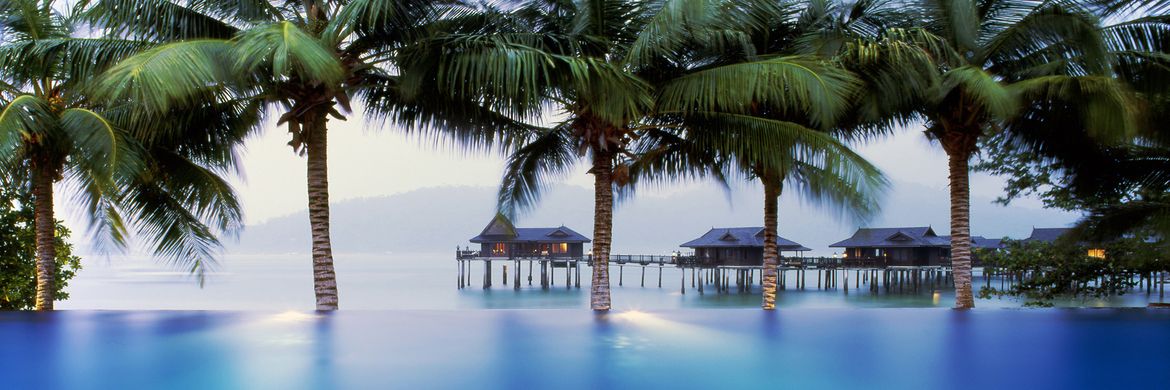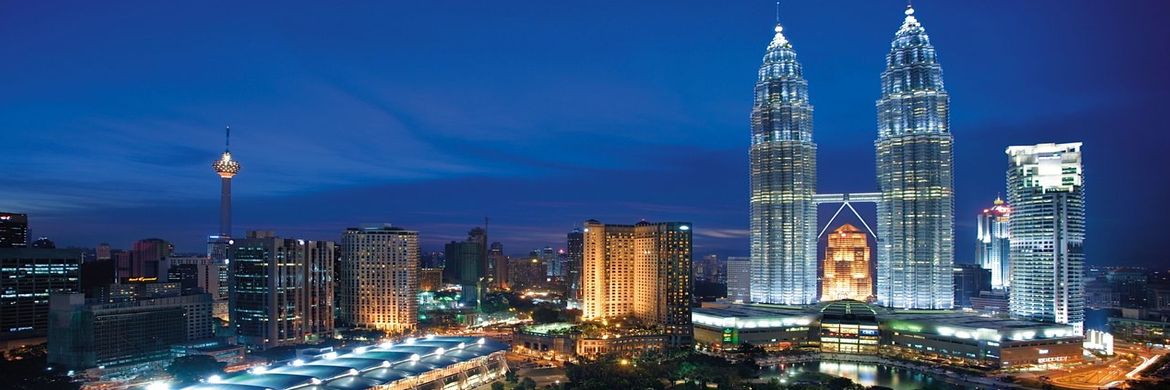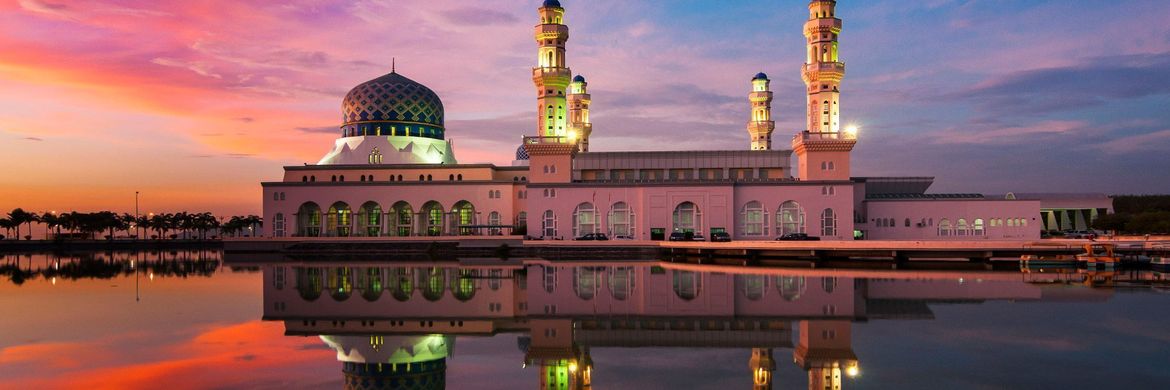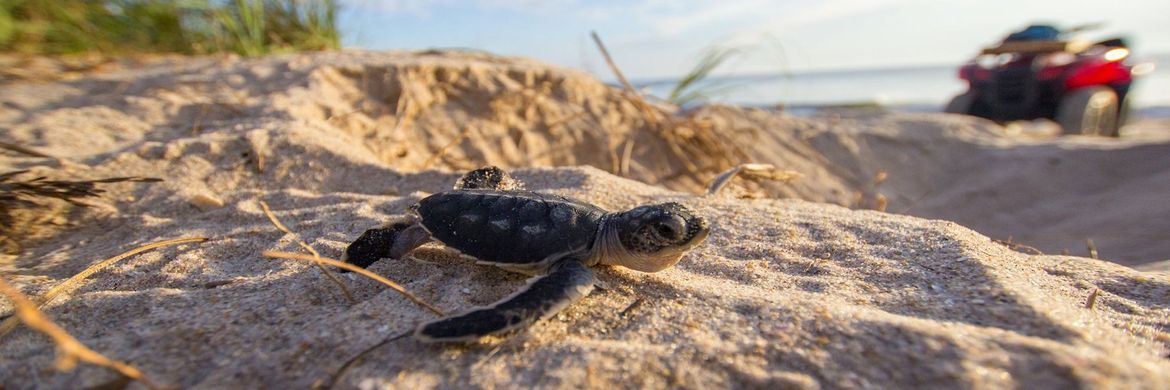Malaysia Escapes
Malaysia is a Southeast Asian country occupying parts of the Malay Peninsula and the island of Borneo. It’s known for its beaches, rainforests and mix of Malay, Chinese, Indian and European cultural influences. The capital, Kuala Lumpur, is home to colonial buildings, busy shopping districts such as Bukit Bintang and skyscrapers such as the iconic, 451m-tall Petronas Twin Towers.
A former British colony, Malaysia is now a modern, multicultural and wealthy constitutional monarchy, with its capital, the high-tech city of Kuala Lumpur (KL), located on peninsular Malaysia. The nation, including the more remote parts of Sarawak and Sabah, is host to a variety of diverse cultures and ethnicities and both modern and traditional lifestyles. The cuisine is amongst the tastiest in Asia. In addition to its cultural appeal, Malaysia lures travelers with white, sandy beaches, vibrant coral reefs, dense jungles, high mountains and tropical rainforests.
Diverse yet unified, Malaysia is a world unto itself. Destinations include Kuala Lumpur, (Batu Caves, Hindu shrines, Petronas Towers, Masjid Jamek mosque, British colonial architecture) Bako National Park (hiking, photography, monkeys), Borneo (Kuching boasts roaring rapids, picnics on the beach and the Orang Ulu tribal people), Kapit (the fierce Sea Dyak headhunters, rapids and rainforests), Mabul and Sipadan Islands (diving, tropical fish), Turtle Island (watch giant turtles lay their eggs), Kudat (Proboscis Monkey Sanctuary, Sepilok Orangutan Rehabilitation Center and Sukau) and Kota Kinabalu (Tunku Abdul Rahman National Marine Park and the 13,000-foot Mount Kinabalu, the highest peak between the Himalayas and Papua New Guinea).
KUALA LUMPUR
Kuala Lumpur, or “KL” as it’s often called, is the epitome of an emerging Asian city. This multicultural city boasts culture,cuisine art, museums, shopping and so much more. The Batu Caves, a major Hindu Shrine and the site of the yearly Thaipusam Festival, shows the city’s roots in ancient tradition. On the other hand, the Petronas Towers are a symbol of the capital’s embrace of modernity and of Malaysia’s status as a major financial player in Asia and beyond. Other highlights of KL include the Masjid Jamek mosque and British Colonial architecture.
PENANG
Penang is a beautiful island off the northwest coast of mainland Malaysia. The island contains some beautiful colonial buildings, as well as a long history of foreign settlements. Like so many places in Asia, Penang owes is modern beginnings to the British East India Company. This was the first such settlement in Malaysia for the British, who sought to push out the Dutch and their spice trade. Back then Penang was known as “Betel Nut Island”. Ethnic Chinese eventually followed. Islam was a strong part of the culture. At less than 11 square miles, this tiny island belies the island’s myriad features. There are pretty beaches and quiet fishing villages, as well as a fast-growing information technology center. Georgetown is the main city, and it is a popular take-off point for travelers departing for other islands and parts of Malaysia.
LANGKAWI
Langkawi conjures images of Malaysia at its best: sunny, fun, safe, exciting and even thrilling. Located about 15 miles in the Andaman Sea off Kuala Perlis, it is a collection of 99 islands that can be reached from Satun, Thailand or Georgetown, Penang. The main island is 193 square miles and was established around the 1st Century A.D. There are sleepy villages, water buffalo, and lovely beaches on these islands, which are noted for the eagles above and the marble underneath. Thailand, the British Empire and the Imperial Japanese Army all took an interest in this smattering of nature-rich islands. As Malaysia’s top tourist destination, Langkawi is not limited in its list of activities on offer. These include sunbathing, beachcombing, sailing, island hopping, nature and animal photography, trekking, and searching for dolphins, sea otters and even land-walking fishes. Don’t miss the Seven Wells of the Telaga Tujuh Waterfalls, where you can engage on a jungle trekking course. If you are in town during the Langkawi Biennial (International Festival of the Arts), discover local art by Langkawi’s best artists and artisans.
KOTA KINABALU
Bordered by a patchwork sea of turquoise and azure on one side and ringed by rainforest and the majestic Mount Kinabalu on the other, dynamic Kota Kinabalu, or KK for short, is the perfect gateway into untamed Borneo. Established as Jesselton in the late 1800s by the British North Borneo Company, the city was renamed after independence. Today, Kota Kinabalu is, despite its rapid expansion, a pleasant, comfortable city.
CAMERON HIGHLANDS
Located about 200 kilometers from Kuala Lumpur, the Cameron Highlands are the highest point in West Malaysia accessible by road vehicles. It’s roughly the same size at the nation of Singapore. There are amazing activities waiting here including trekking, hiking, mountain climbing around forests, gardens and waterfalls. The highest point of Gunung (Mount) Brinchang is 6,666 feet above sea level. Enjoy the Mossy Reserve, Multicrops Central Market, Boh Sungai Palas Tea Estates, Time Tunnel Museum and Cameron Highlands Butterfly Farm.
SELINGAN TURTLE ISLAND
Turtle Island National Park, known locally as Pulau Penyu, is the nesting site of the green and hawksbill turtles, which come to three small islands here to lay their eggs. The park is heavily protected with only limited visitation allowed, and only overnight travelers have the opportunity to see this rare natural phenomenon.
- Batu Caves – Visit the Batu Caves, a major Hindu Shrine, and the site of the yearly Thaipusam Festival from mid-January to mid-February. During Thaipusam, thousands of Hindu pilgrims journey to the Batu Caves to do penance for their worldly sins, often through elaborate body piercing.
- Petronas Towers – See Kuala Lumpur’s Islamic-inspired, iconic landmark: the Petronas Towers. A symbol of Malaysia’s booming economy, the towers were financed by the state-owned Petronas oil company, which occupies the entirety of Tower One’s 88 floors. Take a high-speed elevator to the viewing deck and walk on the Sky Bridge connecting the two towers.
- Street Food – Go on a “food crawl” through the eclectic, flavorful world of Malaysian street-food. Sampling hawker food is practically the national pastime, and your guide can introduce you to the top local specialties, which blend Chinese, Indian, and Malay influences. Sample nasi lemak, rice steeped in coconut milk, lemongrass and ginger, and garnished with anchovies, roasted peanuts, pickled vegetables, a variety of meats and hot spicy sauce (sambal). There’s also Indonesian satays, South Indian roti chennai (a popular flaky flatbread), and Chinese-style fried rice noodles, or mee.
- Walking Tours- Enjoy a walking tour of the old Colonial District for a taste of the city’s British past. Pass through Little India and experience its vibrant community, full of kaleidoscopic colors and pungent smells. Finish in Chinatown, the heart and soul of Kuala Lumpur’s large Chinese population.
- Beach Lovers – While the beaches are not overwhelmingly beautiful, they provide a nice place to enjoy a picnic on a sunny day. The most secluded beaches are at Teluk Kampi, Muka Head and Pantai Kerachut. There is an old and charming lighthouse at Muka Head beach.
- Butterfly Farm – There is an outstanding collection of tropical butterflies, as well as snakes, scorpions and other dangerous insects.
- Food Stalls and Cooking Classes- Penang is one of the finest food outposts in all of Malaysia. Wander around Penang’s myriad food stalls to sample the area’s diverse cuisine, which includes mee sotong (fish-laden noodles), a local delight. Alternatively, why not take a cooking class?
- Penang Dragon Boat Festival – The event is held at Teluk Bahang Dam and features teams from Australia, China, Japan, Holland, the Philippines, Thailand, Canada, America and other nations. It has been on-going since 1979. Race dates vary every year.
- War Museum – This was a part of a military fortress built by the British Army during the rise of Japan as the 1930s unfolded. It was meant to protect from an attack on the southern flank. The fort was a mini-marvel, featuring underground tunnels, an intelligence and logistics center, offices, bays for firing artillery and an infirmary.
- Kayaking – At Skeleton Beach, board kayaks for a journey up the Kubang Badak River. Kayak along a mangrove forest, where you will have a chance to see indigenous wildlife. Cruise alongside the coast until you arrive at a fishing station upriver. Disembark and take another short drive to the starting point of a short hike through the rainforest. Hike just 1200 feet to a secluded stream where you can take a dip and enjoy a picnic lunch alongside the water.
- Mangrove Forests – Explore the limestone cliffs and mangrove forests of Langkawi, which act as a nursery for shrimp and fish. Its inhabitants include eagles, dolphins, otters and land-walking fishes.
- Sunken Islands – As a bonus, an extra five islands beyond the main 99 are revealed during low tide. Hire a private boat and travel to one of the islands, where you can enjoy a picnic on this ephemeral island.
- Telaga Tujuh Waterfalls – Telaga Tujuh Waterfalls, also known as “The Seven Wells,” are believed in legend to have been the playground of mythical fairies. Bathe in the pools or go on a jungle trekking course that runs 2,500 meters up two separate mountains.
- Wildlife Trek – Photography enthusiasts will enjoy trekking on an expedition aimed at capturing Langkawi’s immense natural beauty and wonders of the animal kingdom. There are long-tail macaques, dusky leaf monkeys, flying lemurs and owls. Bird lovers can look forward to spotting the kingfisher, herons and the white-bellied sea eagle.
- Mount Kinabalu – An early morning drive (2-3 hours) from central KK will deliver you to the base of the sacred Mount Kinabalu. At 13,513 feet, it is the largest peak between the Himalayas and Papua New Guinea. The mountain sits in a national park of the same name, and has excellent hiking trails, with ample opportunities to spot rare local flora, such as carnivorous pitcher plants and wild-growing orchids.
- Petagas War Memorial = The Petagas War Memorial is a must-see for World War II history buffs. It has been set up to remember and honor the 176 Kinabalu Militia who engaged in the “Double Tenth Revolt” on October 10th, 1943 against the Japanese Imperial Armed Forces. All of the attackers were summarily executed by the Japanese.
- Poring Hot Springs – Near the base of Mt. Kinabalu is Poring Hot Springs, Japanese-style onsen tubs that were first built during the occupation of WWII. A number of hot and cold, private and public pools are available. There is also a canopy walk nearby, where you can wander through treetops hundreds of feet above the jungle floor.
- Boh Sungai Palas Tea Estates – Past a Hindu temple in the northern section of Brinchang, one will find the Boh Sungai Palas Tea Estates. Tours displaying how to process and make tea are available. Operated by Malaysia’s largest tea company, this lovely estate has an on-site café with views of beautiful rolling hills.
- Cameron Highlands Butterfly Farm – Raja Brooke isn’t a meandering stream: rather it’s just one of many species at the Cameron Highlands Butterfly Farm. Travelers with children are especially encouraged to visit this interactive educational center. There are all manners of insects here, including the stick insect, which your guide can gently place on your hand.




